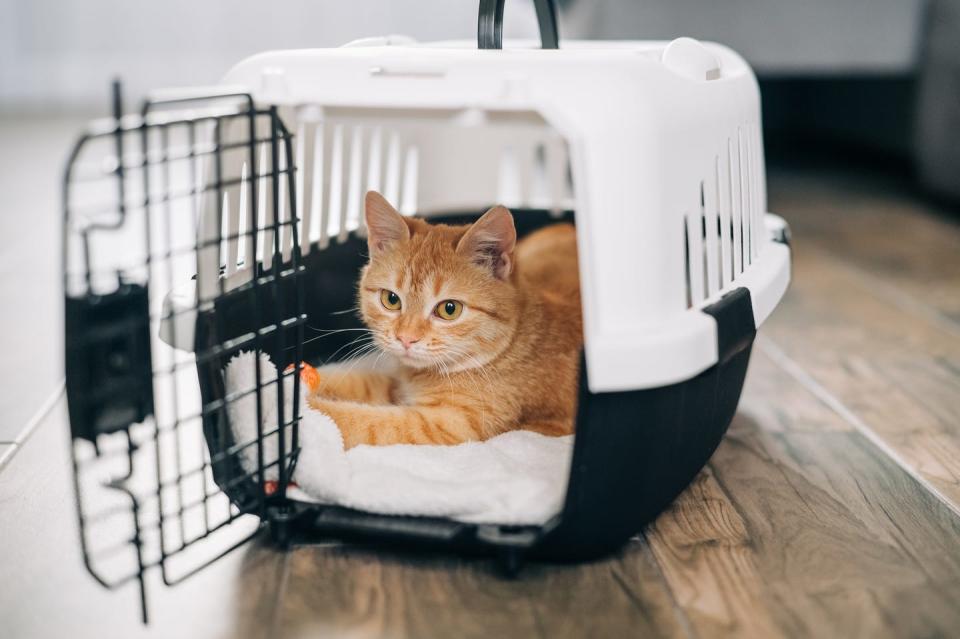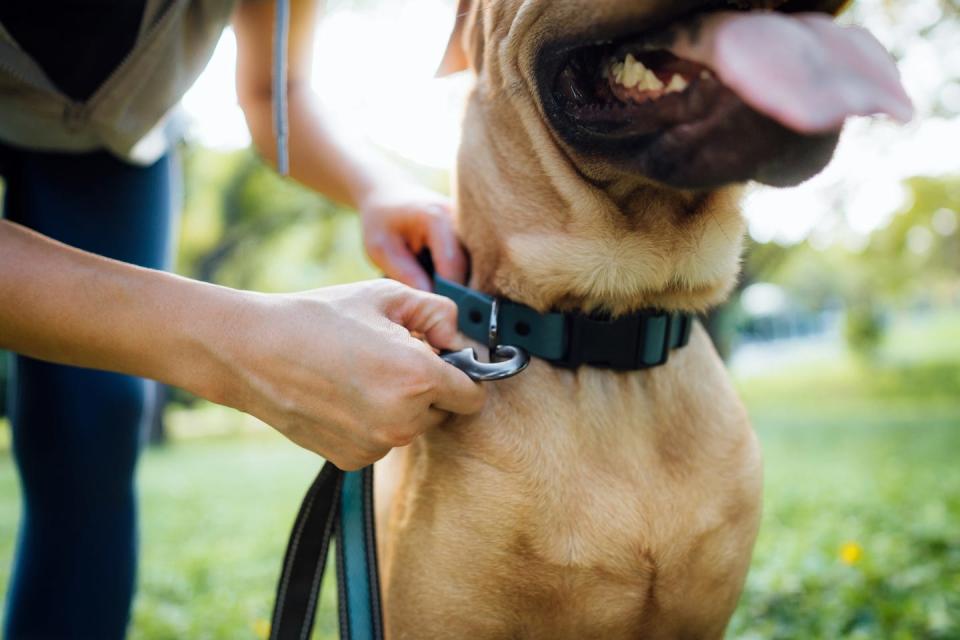I'm a Certified Dog Trainer. Here's How I Prepare My Pets for Extreme Weather.

Wildfires, tornadoes, hurricanes. Severe weather and natural disasters are becoming a more regular part of life for people across the country. Even though many of us think of our pets as our children, a new study found that only one-third of Americans have a disaster plan for their pets.
As a certified professional dog trainer and FIT DOG instructor, I've been involved in the pet world for a long time. But it wasn’t until Hurricane Sandy hit New York City in 2012 that I realized how vulnerable my two cats, three dogs and I were to natural disasters. Soon after, I did my research, talked to experts and came up with a strategy to keep my pets safe should bad weather impact my household again. You should, too. Here's where to start:
How to Prepare for Bad Weather

When winds are calm and the skies clear, get your plans and supplies in place.
Plan Your Escape Route
If you intend to shelter in place during a natural disaster, make sure that you have enough supplies in the house to care for your pets for an extended period until life returns to normal.
You’ll also want to consider where you would go if you were to need to evacuate. If you live in an area prone to hurricanes look, at the evacuation route you usually take. Research which hotels along the route are pet friendly (some hotels will waive their no-pet policies in the event of emergencies). Or check with friend and family in advance to see if your pets are welcome to evacuate with you to their homes. Also, check with your veterinarian about getting your pets microchipped, if they aren't already.
Create a Pet Emergency Kit
Every member of your family should have their own emergency kit — including pets. They'll contain nearly everything your pets might need in the event you need to evacuate or shelter in place, including:
Crate or carrier for each of your pets
Collar for your cats and dogs with updated ID tags
An extra leash
Enough food for a week
Enough water for everyone, including pets for several days or a week
Have a supply of any medication your pet might take daily, or any medication given regularly/as-needed like for arthritis
Treats, which can help with stress
Toys, which can help ease stress and boredom
A picture of your pet in case they become lost
A picture of you and your pet together in case you need to quickly prove ownership.
A print copy of veterinary records for all your pets as they may be difficult to access online in an emergency.
A pet first aid kit, which will include supplies to treat minor injuries
Contact information for emergency veterinary clinics in your local area, and any areas you are likely to evacuate to.
Battery/solar powered lights, filters, etc. necessary for any fish, reptiles or other exotic pets in the event of a power outage.
Train Pets to Love Their Carriers
Before a natural disaster get your pets used to spending time in their cat crates or dog carriers. If you need to evacuate your pets may need to be kenneled at an evacuation shelter, and/or while in the car. If your pets are already comfortable with being in their carriers, it will make the evacuation process less stressful.
To help your pets adjust to being in their carriers, have the carriers out in the house so they get used to them. To help your pet create positive associations with the carrier, put toys and treats inside for your pets to find. By pairing the carriers with things your pet finds rewarding, they will choose to spend time inside. This helps pets to be less stressed when they need to be confined to them during an emergency.
Practice Evacuating
Do evacuation drills with your pets regularly. Practice gathering your emergency kits, carriers and pets — that way, you'll be able to identify if there are supplies you’re missing or need to replace. You’ll also get your pets used to the process of being gathered up in a hurry. This can help reduce stress in an actual emergency and decrease the likelihood your pet will hide when you need to gather the family quickly to evacuate.
What to Do When Bad Weather Strikes

Keep these tips in mind before and during a disaster.
Keep Pets Supervised
Natural disasters are stressful for people as well as pets and they can behave unpredictably when bad weather strikes. Don’t allow your cat into a catio, or your dog into a fenced backyard before or during a storm. Instead, keep your pets leashed or inside. Bad weather can spook pets, and fences can be damaged by inclement weather which could result in your pet accidentally getting out and lost.
Prepare for the Worst-Case Scenario
If conditions are deteriorating, use a permanent marker to write your phone number on your pet’s belly skin even if they're microchipped. If true disaster strikes, your pet's collar may come off and communications systems could be knocked out, preventing microchips from being checked.
Stay Together
During a natural disaster, it’s important to stay with your pets. If you think you may need to evacuate quickly, keep your pets in a bedroom or other small area of your home so they are easier to gather. Increasingly, Red Cross and other emergency evacuation shelters will have areas for pets to stay while people are housed in another area. If there is an order to evacuate from your area, pets should be brought with you and not left behind.
You Might Also Like


